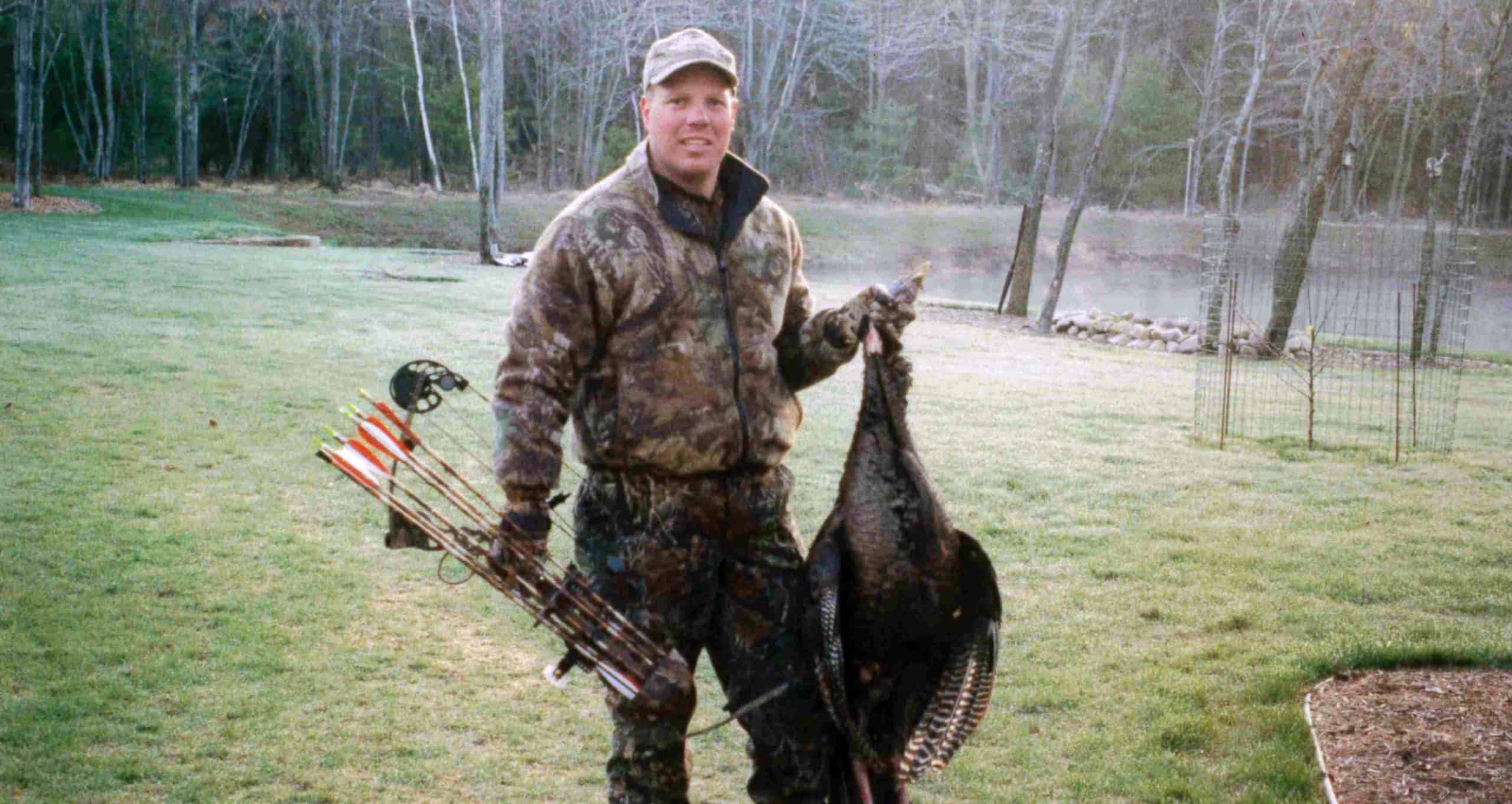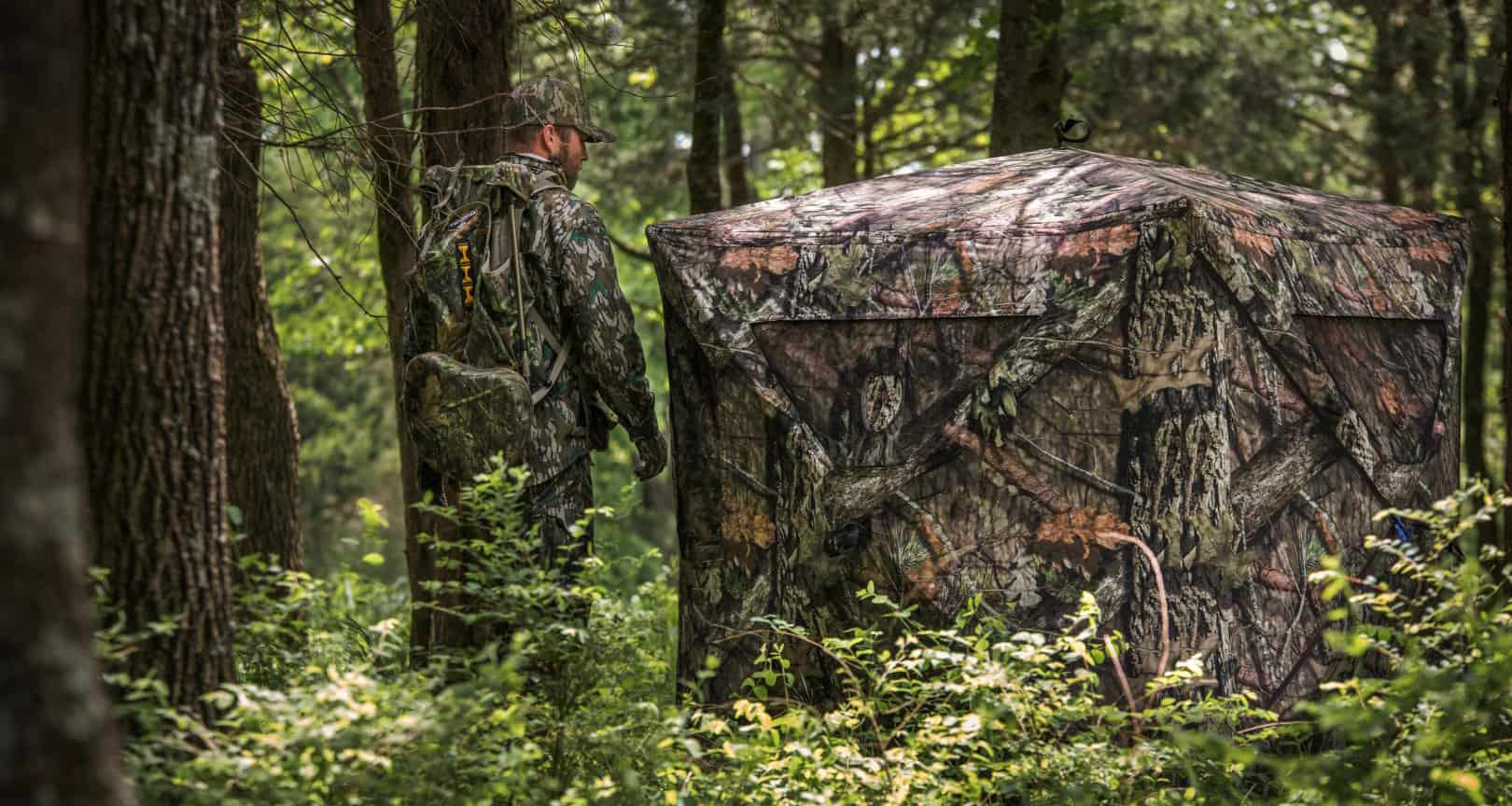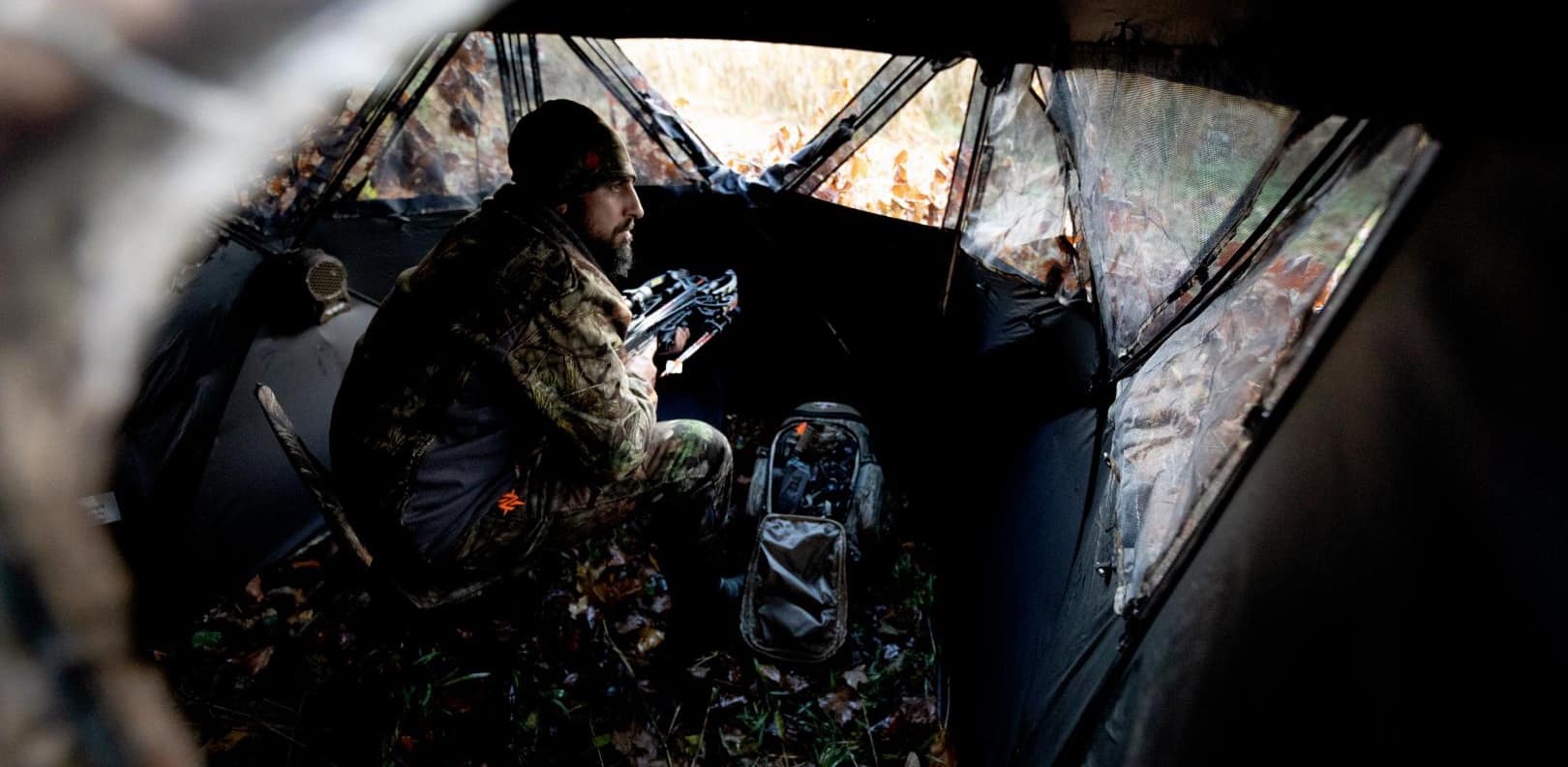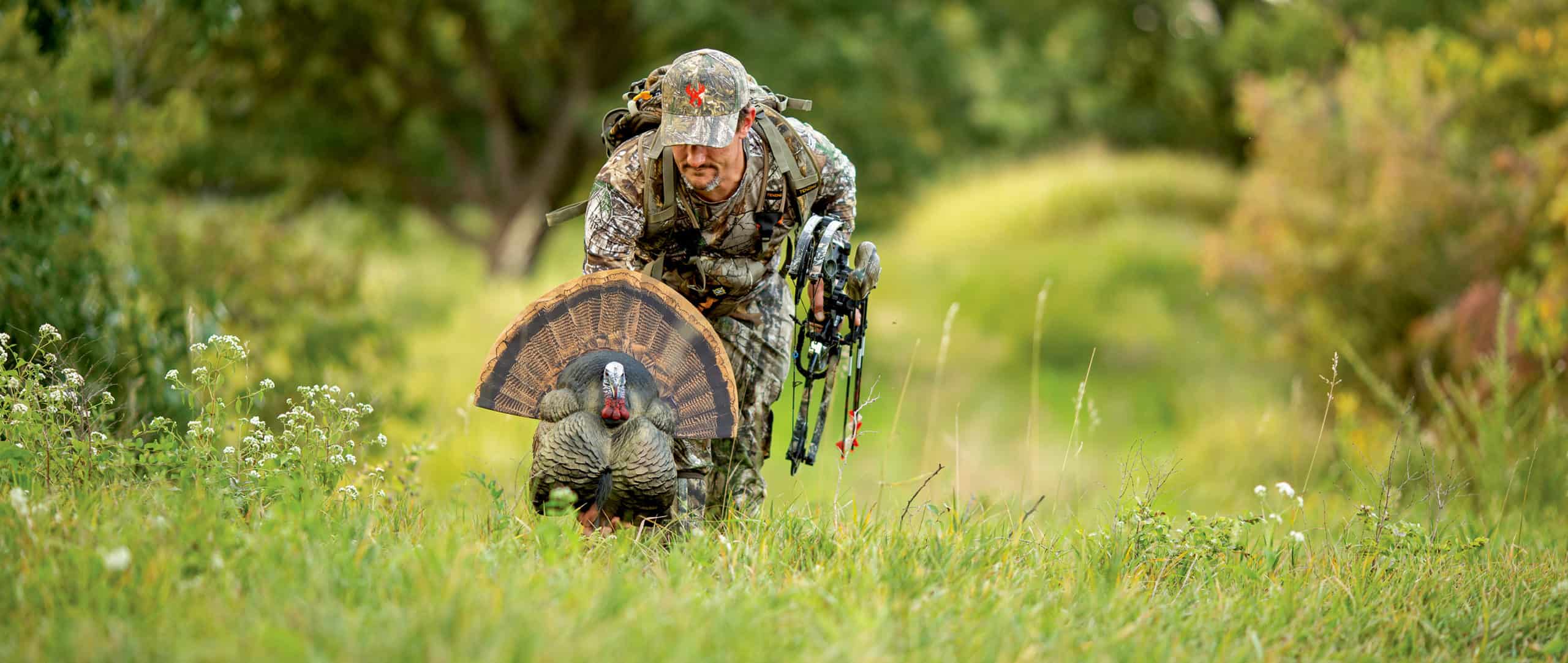Tips for successfully archery hunting turkey
by Bob Barteck, IAFF Local 425 Alumni
Turkey hunting with a bow is exhilarating, and it helps keep your archery skills honed throughout the year. With turkey season opening soon and the price of turkey shotgun loads sky-high, consider tuning up your bow to hit the spring woods.

Bob Barteck with a turkey harvested with a compound bow.
How hard is turkey hunting with a bow?
Hunting a bird with a brain the size of a walnut shouldn’t be that hard, but it sure is.
USA Executive Director & SEO Scott Vance has been exclusively bow hunting turkey for three years and says, “killing a turkey with a bow is 75% harder than killing one with a gun. The issue is getting drawn without being detected and making a sometimes difficult shot. Everything has to be perfect to kill turkeys with a bow even under the best circumstances.”
According to the USA’s Director of Union Relations Walt Ingram, who has been hunting turkey for more than 50 years, archery hunting turkey is the most difficult turkey hunting he has ever attempted. “One year in Michigan, I hunted the very last day of their season and had one of the best gobbling mornings you could ever wish for. At least 15 big gobblers came to the call, and I saw more strutting turkeys than I could count in shotgun range, but I didn’t get one shot opportunity with my bow,” he said. “But you will have the opportunity to observe more about turkey and turkey behavior bowhunting than you will ever see gun hunting.”
Yet the challenge is part of the fun, right? The following are tips for successfully harvesting a turkey with a bow.
How to turkey hunt with a bow:
1. BUY A BLIND

A quality blind is an invaluable tool when archery hunting turkey.
A quality ground blind is an invaluable tool, though picking out the right one for bow hunting turkey can be difficult. The window shape, position, height, and the overall size must hide you in the shadows while you draw a bow and swing on a walking bird. We prefer the hub-style blinds because of their ease of set-up and wide interior. A quality lightweight stool that is easy to pack while chasing toms is essential too. Shop around and get inside as many blinds as you can. Draw your imaginary bow inside the store display model—it’s the only way to ensure the blind fits you and your set-up.
2. CAMOUFLAGE YOURSELF
If you are hunting from a ground blind, you need to wear all black on your upper half once inside the blind. That includes black gloves and a headcover. I typically carry a black jacket in my pack that I can pull over my camouflage. It’s amazing what a difference blacking-out your appearance can make. Turkeys are incredibly weary and quickly key-in on movement. The black interior of the blind allows you to get away with some movement, but you should try to remain still and stay in the shadows. Just be sure to wear full camo to and from the blind or when hunting outside a blind for safety.
3. BE DEADLY ACCURATE

Having a properly tuned, accurate set-up that you have practiced with is the single most important key to success. A good rule of thumb is that you need to be consistent in hitting a 3” diameter target at various yardages. Your bow doesn’t need to change much from a deer hunting set-up, but I recommend switching to a movable single-pin sight like the HHA Tetra. The single pin has a big advantage of pin-point accuracy at specific yardages. Just dial the pin the correct yardage and hold dead-on—there’s no guessing in the gap between pins. You can turn down the poundage, but it’s not essential. Arrow weight is not of huge concern either, heavy or lighter set-ups will all have enough kinetic energy to kill a turkey. I recommend using turkey-specific mechanical broadheads over fixed because they offer a larger cutting diameter and deliver more kinetic energy to the bird. I like the NAP Spitfire Gobbler Getter expandable broadhead. The large size helps deliver the shock to the bird along with the 1 ½” cutting diameter.
See: Where to Shoot a Turkey with a Bow
4. SOUND LIKE A HEN
Turkey calls have come a long way in the last two decades. Many mouth diaphragm calls have domes that help get the right pitch and volume. These require practice. I like to practice while my family is at home, so they can critique my skills. I also carry a box call and a simple plunger call. Having a few different calls allows me to mimic a small flock of hens, which can help attract reluctant toms.
5. USE LIFELIKE DECOY TACTICS

Lifelike decoys are very beneficial for bow hunting turkey.
Decoys have also made drastic improvements in recent years. Decoys like the Avian-X look pretty darn real. Placing a decoy or two in your desired shooting lane can help convince those reluctant toms to commit to your calling. Often, if they hear calling but can’t see any birds, they get uneasy and hold up short of bow range. I recommend putting the decoys at 15-18 yards to lure a tom within easy bowshot. The decoys also help distract the tom, allowing you to move into position for the shot.



